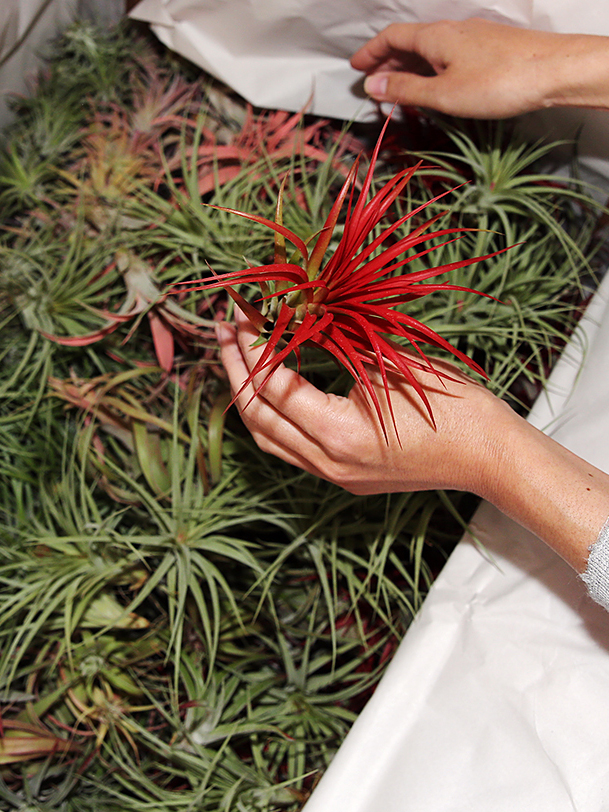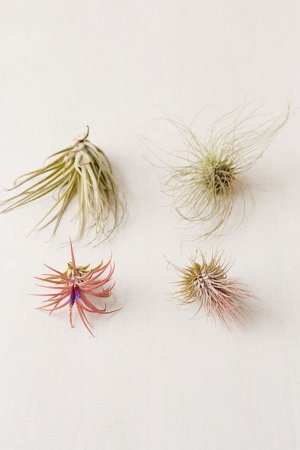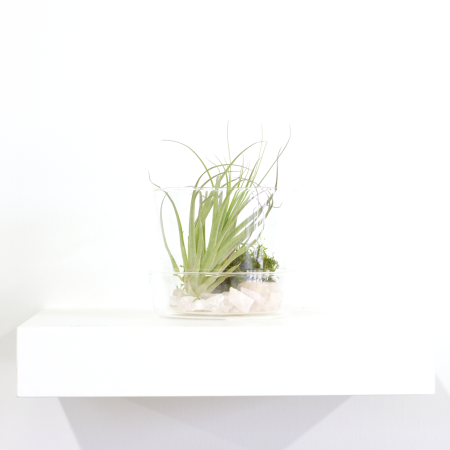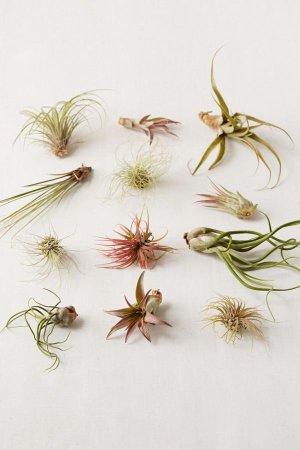We may earn revenue from the products available on this page and participate in affiliate programs.
Many have claimed the title of “most low-maintenance houseplant,” but few subsist solely on air. Except for, of course, the air plant. These soilless, pot-less shocks of green are native to northern Mexico, and their rootless nature makes them incredibly versatile—you can plop them in any vessel, string them up on a fishing line, or even suspend them in glass orbs hanging from the ceiling.
“Air plants, formally tillandsia, are epiphytes, a type of plant that grows on the surface of other plants,” explains Charlie Gallagher, founder of Los Angeles–based Freak Plants. Invest in one or two and follow Gallagher’s air plant care advice.
Focus on Air Quality
“As the name suggests, air plants don’t require soil and are happy to a life exposed to the elements,” notes Gallagher. Instead, tillandsia thrive in a space with good air circulation, so they can “take nice deep, fresh breaths,” he says. Simply open your doors and windows (or turn on a fan) to create the perfect habitat.
Stay Away from Direct Sunlight
Air plants crave bright, indirect rays and will feel right at home in a sun-soaked room. Direct light, on the other hand, not so much—it can dehydrate them quickly and they may even suffer a sunburn. “A front-row seat on the windowsill is not ideal,” cautions Gallagher. And make sure the room temperature doesn’t sink below 50 degrees—air plants like a warmer climate.
Give Them a Bath Once a Week (or More)
“We recommend a three-step approach to watering: Dunk, soak, and dry,” explains Gallagher. “If the plant remains wet at all times, it will rot, which is why we advise against the misting method.” Submerge your air plants in a water bath once a week, or twice if it’s superhot. Shake them underwater to expel any air bubbles, then let them soak for 30 minutes or so. Remove them from the bath, shake off the excess moisture, and wait until they’re dry before returning them to their rightful places. Pro tip: “Use a colander for a post-soak toss and chill.”
Too much or too little H2O are the most common causes of air plant downfall. “If you’ve overwatered them, you’ll notice a soggy-looking leaf or a dark bulb, signaling rot,” Gallagher explains. Underwatering will result in brown, dry leaves that curl more than usual.
Here’s where to nab one of these trendy houseplants:
More Plant Stories: Is This the Next Monstera? How to Make This Tropical Plant Thrive How to Care for Succulents (and Other Low-Key Plants) If You’re Straight-Up Forgetful, the Snake Plant Was Made for You




